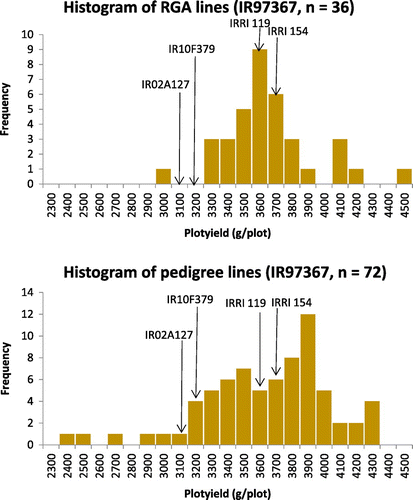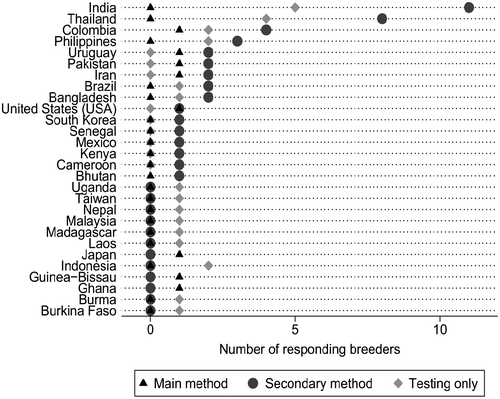Figures & data
Table 1. Rice varieties developed by RGA.
Figure 2. RGA system used in irrigated breeding programme at IRRI. (a) seeding (b) seedling stage (c) vegetative stage (d) flowering stage (e) glasshouse set-up (f) showing tillering (g) showing panicles (h) harvesting stage with inset showing harvested panicles (i) inside view of screenhouse (CS-08B).
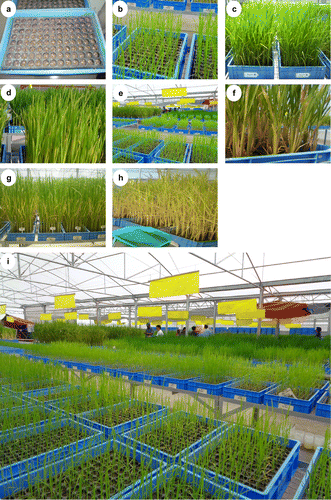
Figure 3. Field RGA system piloted at IRRI. (a) initial seeding (b) seedling stage (c) vegetative stage resembling seedling nurseries (d) booting stage (e) harvesting mature plants (f) harvesting in the field.

Figure 4. Photos of field RGA implemented at BRRI. (a) An F3:4 generation is grown under FRGA conditions at BRRI Farm, Gazipur, 2017. (b) F2 generation with >3000 plants grown under FRGA conditions at BRRI Farm, Gazipur, 2017.
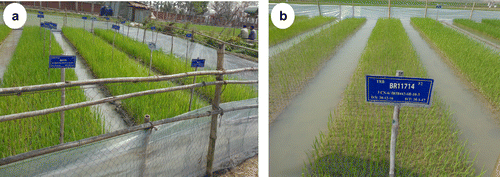
Figure 5. Histograms of yield and flowering time for 3 different RGA populations evaluated in the 2015 dry season OYT. IR98492: yield (a), flowering time (b). IR98590: yield (c), flowering time (d). IR96915: yield (e), flowering time (f). Means of parents and IRRI154 check variety are indicated by arrows.
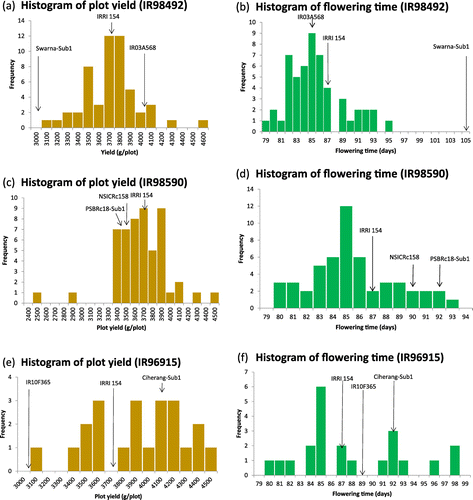
Table 2. Performance of selected RGA lines in 2015 DS OYT and 2015 WS PYT. (a) RGA lines tested in group 1 (early/medium maturity) of the PYT (2015 WS) sorted by yield performance.
Figure 6. Histograms of yield for RGA and pedigree lines from population IR97367 evaluated in the 2015 dry season OYT. (a) RGA lines. (b) pedigree lines (from the same cross). Means of parents and IRRI154 check variety are indicated by arrows.
